The Many Types of Crochet
When I first started crocheting, I had no idea that there was so much more to this than the hobby than what I was doing right then and there. I began with learning the most basic crochet stitches, then turned those into blankets, scarves, and hats. But as I became more involved with crochet, I learned there were so many other versions available.
Types of Crochet Grouped
In fact, there are almost 30 different types of crochet by my count. I’ve done my best to group them by general technique. The classifications are:
- Color Work – Contains the various methods used to create shapes, patterns, or pictures inside a larger crochet project. This is commonly done with many different colors of yarn, but can also be accomplished with negative space.
- Overlay – The methods in this category all use layers of crochet stacked or overlaid on top of each other to create a 3D type of effect.
- Alternative Tools – Most crochet methods use the standard crochet hook. However, not all do.
- Lace – The techniques here mostly use fine yarn with small crochet hooks (but not all) to create delicate and fancy projects such as doilies and open work clothing.
- Alternative Methods – This is more of a catch-all for unique crocheting methods that simply don’t fit within the confines of our other categories.
Most Common Types
Here are the five most common crochet types. Most free crochet patterns you’ll find on either our site or others around the web will be made with one of these five techniques.
1. Common Crochet
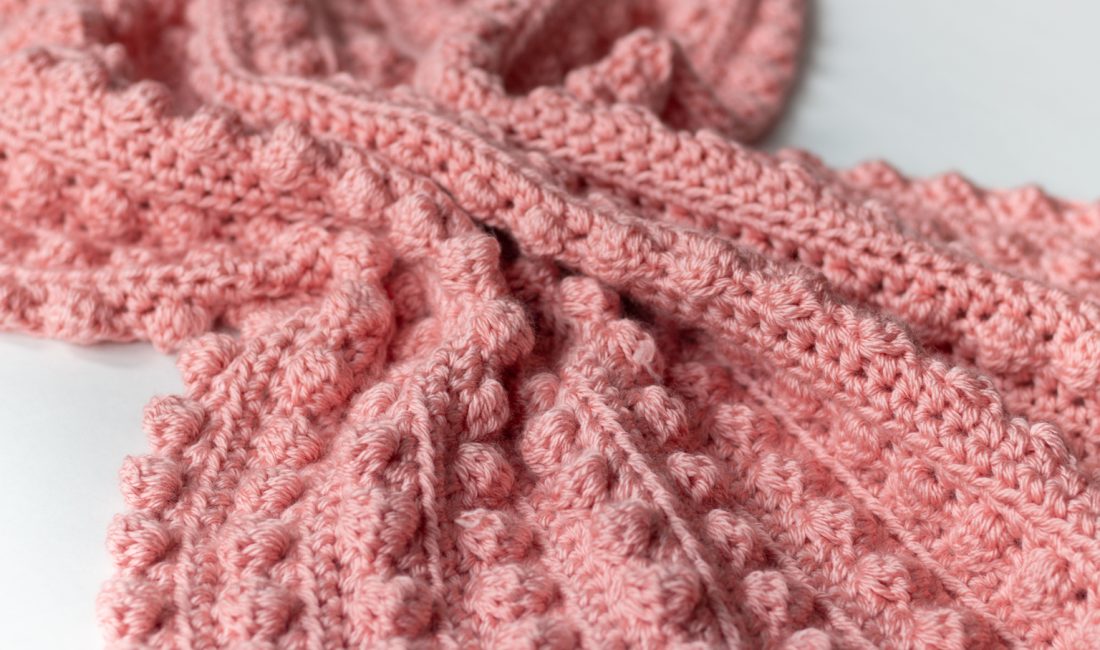
This is the most common type of crochet (hence the name), and the one that almost every beginner picks up first. In fact, it would be hard to start with any other type of crochet. The skills you learn with basic crochet patterns become the building blocks for the other types you’ll expand into.
This is the type of crochet that you use when learning the slip stitch, single crochet or double crochet stitch. These basic crochet stitches, and the rows that are eventually created with them, are the basis of this common type.
However, I’m not really sure what to call it. “Common”, “Traditional”, “Basic”, “Standard”, and “Regular” titles all seem appropriate to use here. I just made these terms up, but I needed a way to differentiate the basic way of crocheting with the more complex and intricate methods that follow.
2. Amigurumi Crochet
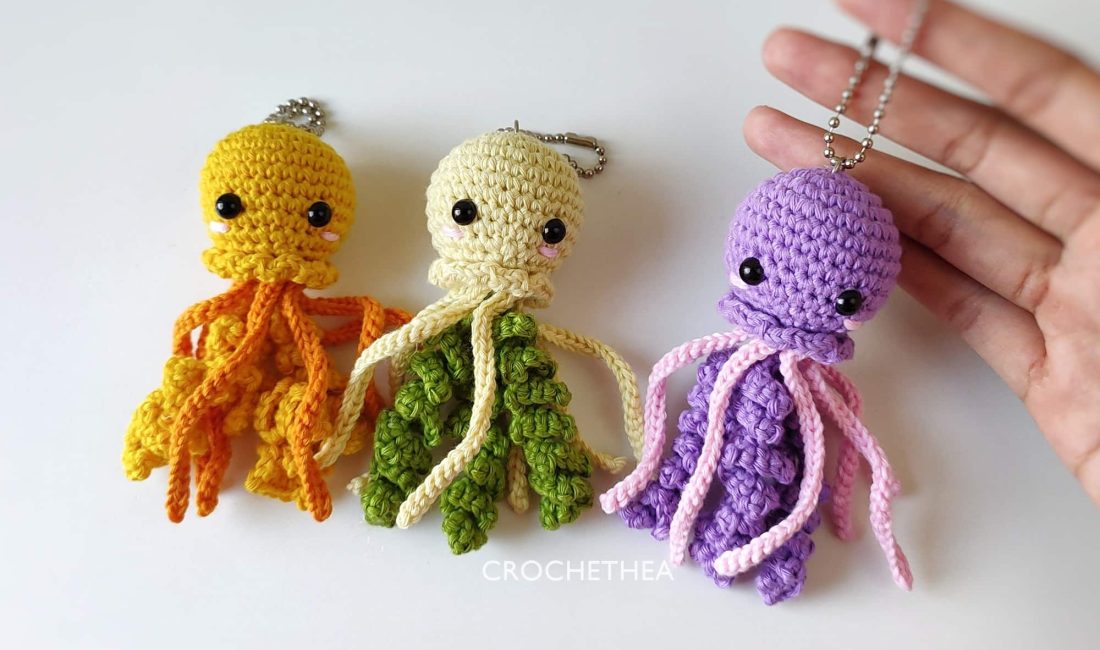
Amigurumi crochet is the Japanese art of knitting or crocheting small stuffed toys and creatures. Amigurumi is a compound of the Japanese words ami, meaning “crocheted or knitted”, and kurumi, which is literally “wrapping”.
This type of crochet mostly uses the single crochet stitch. This method makes heavy use of the magic circle as well.
Most amigurumi projects are small, use many colors, and have multiple pieces that need to be stitched together in the end.
3. Tapestry Crochet
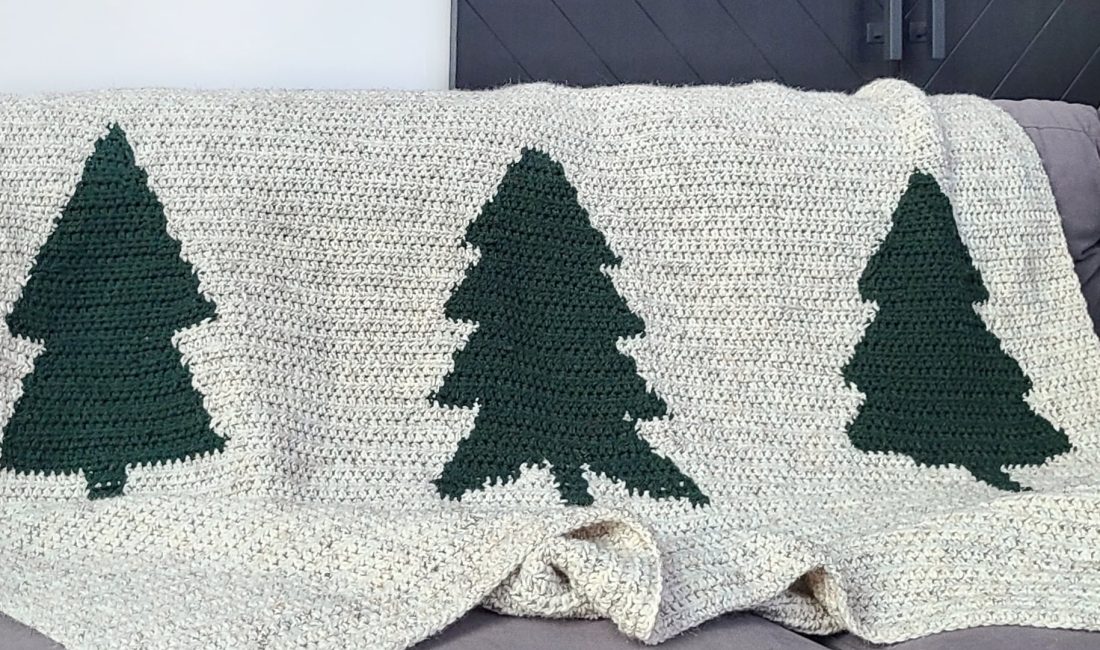
Tapestry crochet is a technique that uses different colors of yarn, thread, or other strands of material in a single row or round to create shapes, patterns, and pictures in the finished work. The designs can be simple or detailed and feature two or several colors.
I’m using this term as more of a category that also includes color work methods like intarsia, stranded, and mosaic techniques as well.
4. Tunisian Crochet
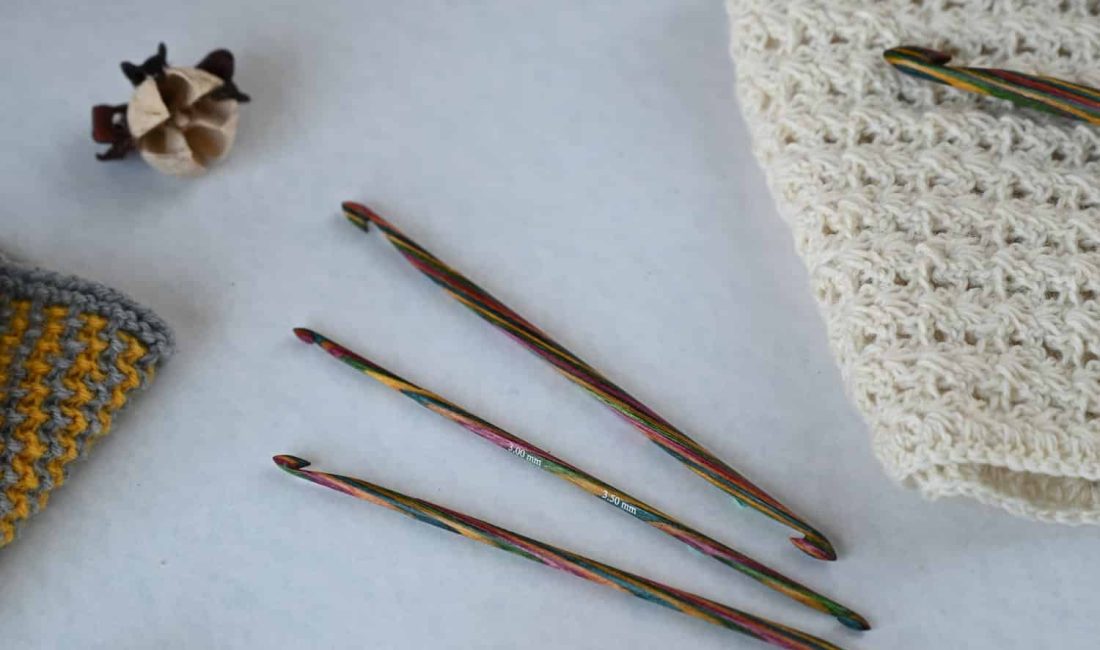
Tunisian crochet mixes components of both crochet and knitting to produce a fabric that looks very similar to either something woven or a knitted stockinette stitch, depending on the specific Tunisian crochet stitch you choose. Tunisian stitches are different from common crochet ones. Tunisian crochet uses things like the purl, knit, and twisted stitches.
A specialized hook is used to create Tunisian crochet projects. It is much longer than traditional crochet hooks because you need room to hold the many loops of yarn that you’ll hold on your hook during each “pass”.
5. Corner to Corner (C2C) Crochet
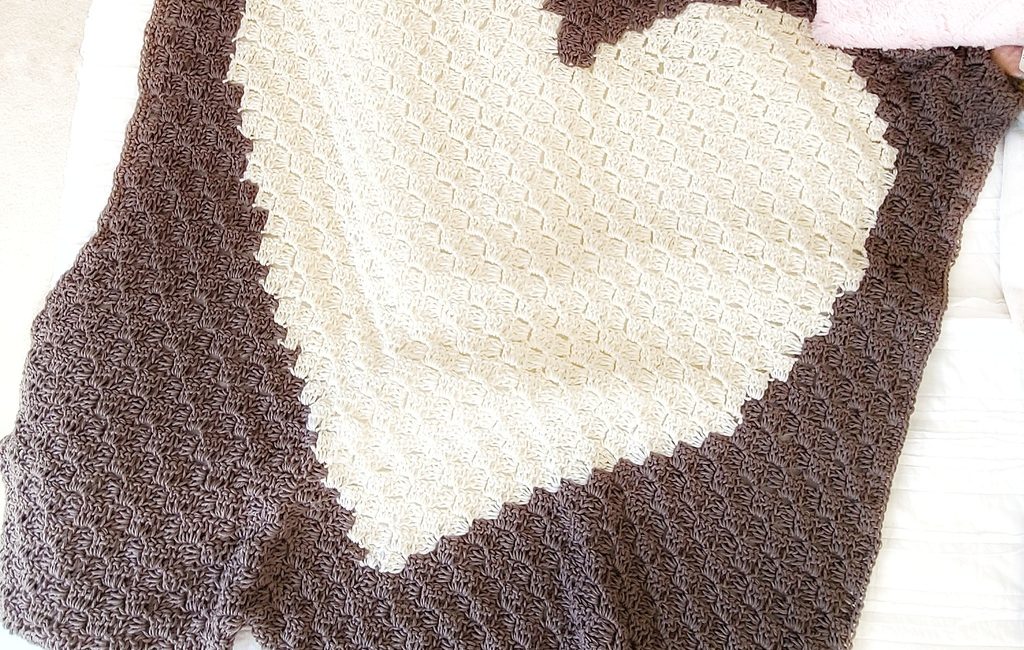
Corner-to-Corner crochet is similar to tapestry in that it is also a technique to create shapes or detailed pictures within your project. The main difference here is that you work a C2C project from the corner diagonally, whereas all other color work methods work via traditional rows.
You follow a C2C pattern along with a grid-like fashion in a diagonal row with any common crochet stitch. You consistently increase your way through the pattern, until you reach the middle, at which point you decrease at the same rate until the end. This is commonly done starting from the lower-right corner, finally finishing in the top-left corner.
Types of Crochet by Technique
I broke the over 28 distinct types of crochet down into groups, so they can be categorized by what makes them so unique.
Color Work Crochet Techniques
All crochet methods in the “color work” category use either colors or negative space to create pictures, patterns, or shapes within larger projects.
| Tapestry Crochet | Uses two or more colors on the same row, encasing loose strands to keep the back of the fabric neat. It is also commonly used as a catch-all term for many of the other color work techniques. |
| Corner-to-Corner | You work a C2C project from the corner diagonally, whereas all other color work methods work via traditional rows. While this doesn’t have to be a color work technique, it often is used as one. |
| Intarsia Crochet | This method is like tapestry, but uses colors in sections without carrying them at the back. |
| Fair Isle Crochet | The key to this technique is the use of the center single cochet stitch, (aka waistcoat), which mimics knitting. The project is then worked in rows like tapestry or intarsia. |
| Brioche Crochet | Resembling knitted brioche, this method is a ribbing made with front post stitches and chains in a two-row stripe pattern. Color changes are only made after the last stitch of a row. |
| Filet Crochet | A style created with chains and double crochets in a grid where squares are either filled or not filled. The negative space is used to create pictures, shapes, or patterns. |
| Mosaic Crochet | Similar to tapestry and stranded crochet, but only uses a single color per row (instead of by stitch or square). |
| Stranded Crochet | Uses more than one color on the same row, leaving loose strands at the back of the fabric. |
Alternative Method Techniques
This is our category of methods that don’t neatly into any of the other categories!
| Amigurumi | Amigurumi is the Japanese art of crocheting or knitting small, stuffed yarn creatures. Amigurumi projects often feature animals, plants, or fantasy creatures, and are typically worked in the round using a small crochet hook and yarn. |
| Entrelac Crochet | These projects are crocheted around a center square. It can also be done with Tunisian crochet or knitting. Each tier of squares works upon the edges of the last one. |
| Hyperbolic Crochet | Often described as hyperbolic corals, this method increases stitches at a regular rate in every row, causing the project to ruffle up. |
| Freeform Crochet | This patternless method creates either 2D or 3D patterns through the use of any-and-all stitch types, row counts and colors. It is typically referred to as “painting with yarn”. |
Overlay Crocheting
Overlay crochet is a technique used to create a pattern or design on the surface of a crochet fabric. It involves working a series of stitches over the top of an already-existing crochet fabric, using a contrasting color or yarn. This can create a variety of effects, such as textured designs, geometric patterns, or three-dimensional fabric.
Overlay crochet can be worked in a number of different stitch patterns, including single crochet, double crochet, and treble crochet. It is a versatile technique that can be used to add interest and texture to a variety of crochet projects.
| Overlay Crochet | This is a technique where a base crochet project is made, then stitches are added on top to create a raised 3D pattern. It is also commonly used as a catch-all term for many of the other layered crocheting techniques. |
| Clothesline Crochet | This method uses traditional stitches worked over a thick rope or twine to help projects (think baskets or mats) hold their shape. |
| Stained Glass Crochet | Very similar to overlay crochet, but the top layer is usually done with black yarn to create a contrasted stained-glass affect. |
| Bavarian Crochet | Each section of this type of crochet is worked in two parts – a base row of clusters and then a row of shells worked on top, creating a sort of fancy granny square. Bavarian crochet uses a stitch pattern to create a diamond-like design. |
Alternative Tool Crocheting Techniques
All the techniques in this section use something other than the standard crochet hook.
| Tunisian Crochet | The resulting fabric looks like knitting, but is instead done with a very long crochet needle that contains many loops at a time. |
| Cro-hooking | it is worked with a double ended hook to create double-sided crochet projects. It allows working of stitches on or off either end of their crochet piece and to have neither a right nor wrong side. |
| Finger Crochet | Finger crochet is a type of crochet that is worked using only the fingers, To finger crochet, the yarn is wrapped around the fingers and then pulled through loops to create the stitches. This technique can be a good option for beginners who are just learning how to crochet, as it can help to develop basic crochet skills and hand-eye coordination. This method leads to a very loose fabric. |
Lace Crochet Techniques
Lace isn’t all fine threads and small hooks. While those are common themes, lace crochet methods all create a sort of motif that is commonly associated with doilies or delicate clothing items.
| Irish Crochet | Using techniques similar to freeform crochet, this lace creation technique starts as separate motifs, which you then join together to create the lace. |
| Hairpin Crochet | Worked with a traditional crochet hook and stitches, with the crochet piece held tight between two thin metal rods. |
| Cro-tatting | Lace is formed using threads and a unique crochet hook having a long slender shank and a small, compact head with cro-tatting. Tatting is a technique used to make a strong lace using knots and loops. |
| Broomstick Lace | Sometimes called “jiffy lace”, it is made with a traditional crochet hook, but the stitches are formed around a long and wide item like a broomstick handle. |
| Beaded Lace | A lace creation method in crochet where beads are threaded through in certain intervals to create a unique pattern. |
| Bullion Crochet | A specialized crochet stitch achieved with a combination of multiple wraps of yarn around a very long hook. This forms a distinctive roll stitch, often used in motifs. |
| Bruges Crochet | Bruges lace is when ‘ribbons’ of crochet are created and then crocheted together to create intricate patterns. |
| Clones Lace Crochet | Similar to Irish lace, it works up much quicker and easier than anything requiring needlepoint. The Clones knot is a big part of the clones lace crochet skill set. |
| Micro Crochet | Achieved using very fine thread and extremely fine crochet hooks. It is the most delicate type of crochet work and is not for the faint of heart—or beginners. |